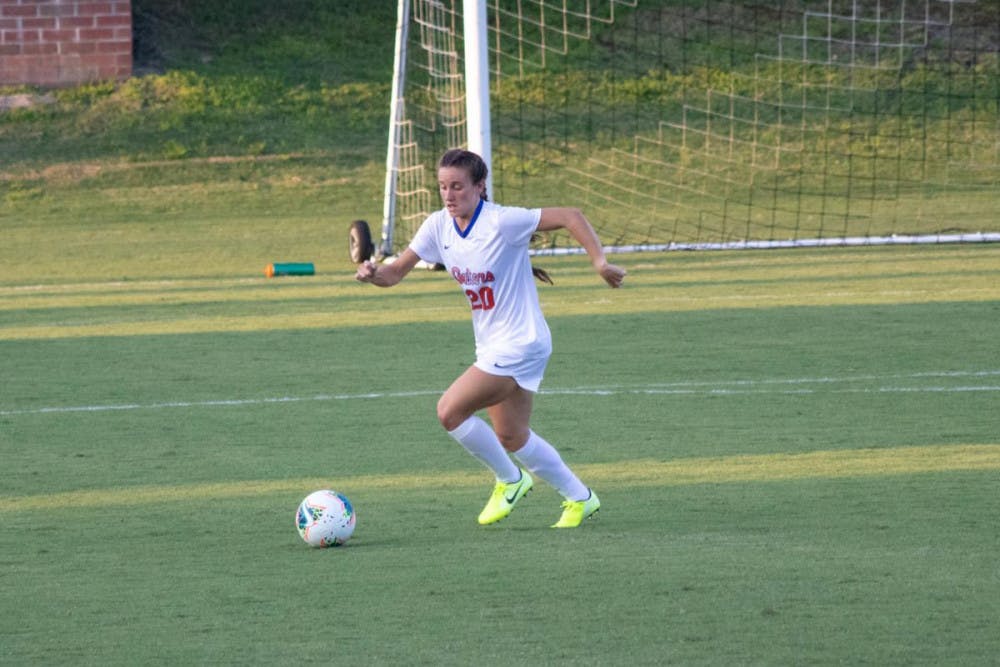There has been a revolution in the beautiful game.
Over the last decade, the lexicon of soccer fans around the world has been flooded with numbers, metrics, and statistics. Expected goals, ball progression rate, chances created/90; these are terms that would be foreign to most soccer fans prior to the last ten years, indicating the sport’s embrace of data and analytics.
The “Moneyball” philosophy has also been embraced and proven by many clubs around the world, with the greatest success story being Liverpool’s rise from mid-table mediocrity to the summit of the Premier League. The Reds have embraced analytics on and off the field, micromanaging the game down to throw-ins and conducting shrewd business in the transfer market.
Considering that these advanced metrics are having such an impact on how the game is managed across the pond, they eventually made their way over to the college game here in the states.
“They are really important in tracking the progress of our players,” said Gators associate coach Alan Kirkup, who is in charge of scouting for the team. “We found that if our team completes 500 passes at an 80 percent completion rate, we will win 90 percent of our games.”
Kirkup noted the importance of these figures in creating a style of play oriented around possession, but they can also shine a light on individual performances.
“If we have a midfield player that is only completing about 50 percent of her passes, she’s probably not going to be on the field very often, said Kirkup.
A data-driven outlook de-emphasizes certain elements of the game, even the ones that may seem the most exciting to spectators.
“Corners are the kind of plays that get the fans really excited,” said Kirkup. “But the chances of converting a corner kick are extremely low. Our focus is really on trying to make first contact on balls played into the (penalty) area from open play.”
The numbers seem to run counter to the instincts of many soccer fans, as Kirkup noted. The much-maligned short corner actually yields better results than the dead ball played into the box.
However, Kirkup did express caution towards the overreliance on statistics, adding that it can be easy to get bogged down in the number of statistics and figures that you can generate.
The nature of the college game diminishes the worth of these statistics as well, with such a difference in quality between the upper and lower ends of college soccer.
“We compared our numbers to South Carolina and found that they looked a lot better on paper,” said Kirkup. “My first instinct was to check their schedule, and South Carolina played a rather easy schedule while we played one of the hardest in the country. Even within our own conference, while you can get beat by anyone on any day, there is a big gap between the top and the bottom.”
Many of the most popular statistics, namely expected goals (xG) and expected assists (xA), are theoretical, measuring the likelihood that a player will score from a certain distance, angle, body part, etc, based on data from thousands of games. This works quite well in the Premier League, for example, where the schedule is balanced and the level of competition is high.
These figures are less effective in the college game, where the strength of schedule, quality and playing surface vary wildly between teams.
The youth soccer infrastructure is quite limited in the United States, particularly in the South, which can make it increasingly difficult to use analytics in scouting players.
There are little to no statistics recorded on high school and club level games and very little game footage available, according to Kirkup. This means that most scouting is still done on an in-person basis, which can make it difficult to collect performance data on specific recruits.
This is changing, however, as club teams are making more and more of their footage available to recruiters and are working in collaboration with sports analytics firms. This, coupled with the continued development of women’s soccer in this country, means that the influence of statistics and data in college soccer is only going to grow.
Follow Declan on Twitter @dawalsh_UF and contact him at dwalsh@alligator.org.






